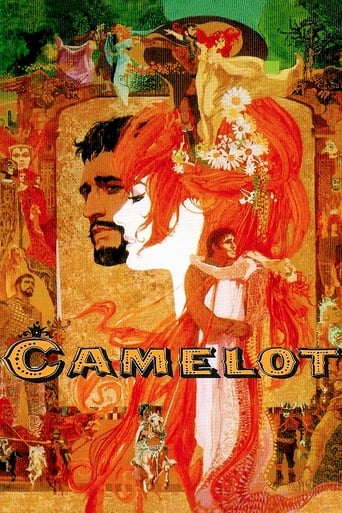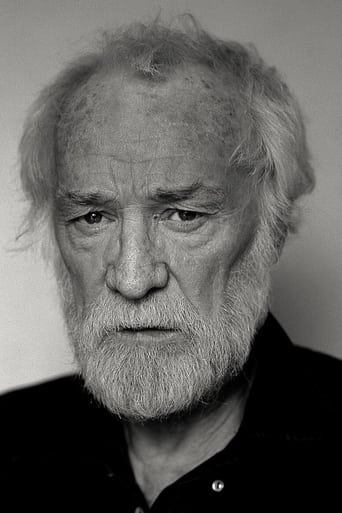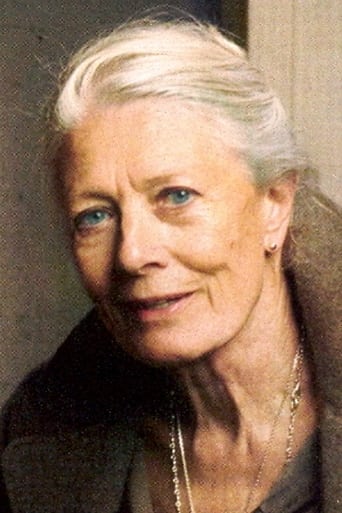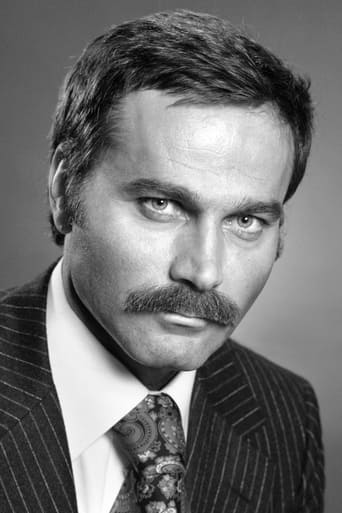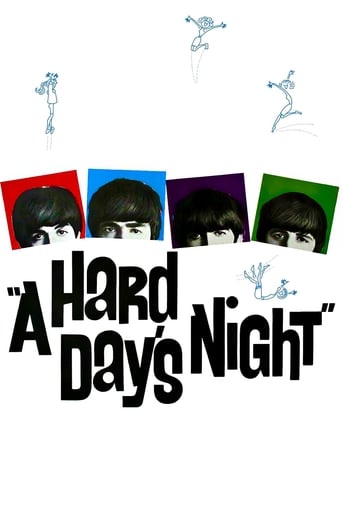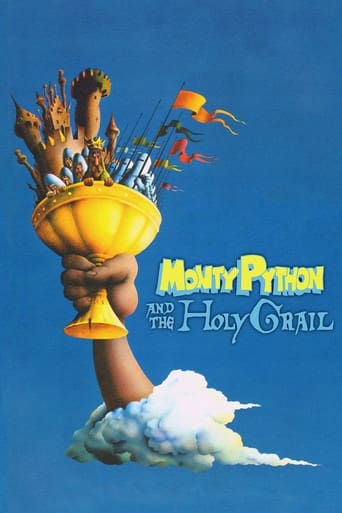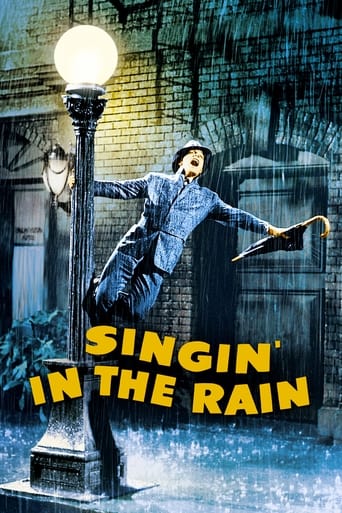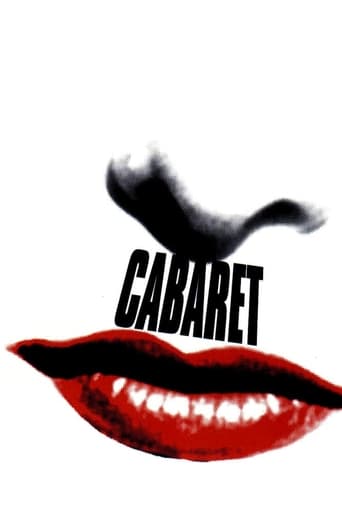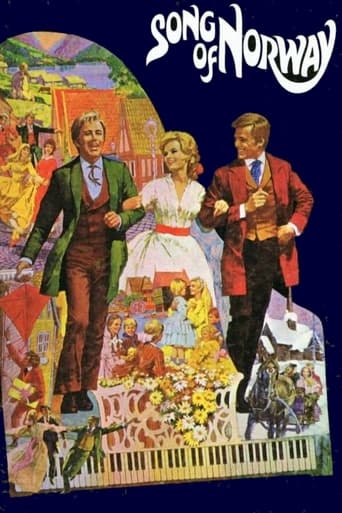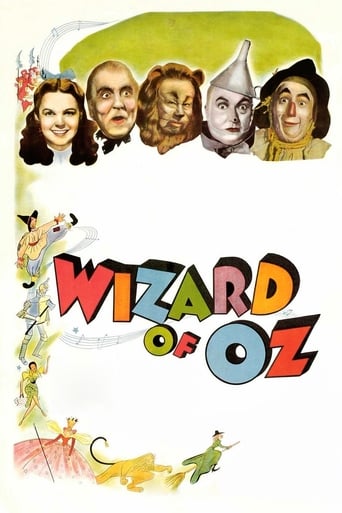Camelot (1967)
The plot of his illegitimate son Mordred to gain the throne, and Guinevere's growing attachment to Sir Lancelot, threatens to topple King Arthur and destroy his "round table" of knights.
Watch Trailer
Cast
Similar titles
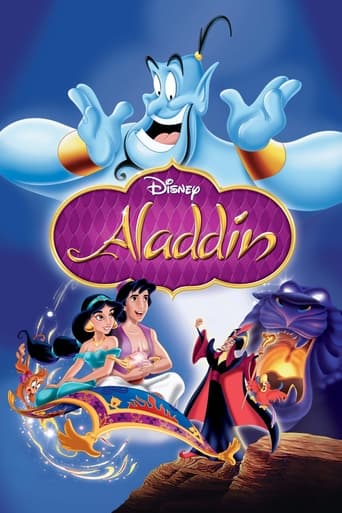

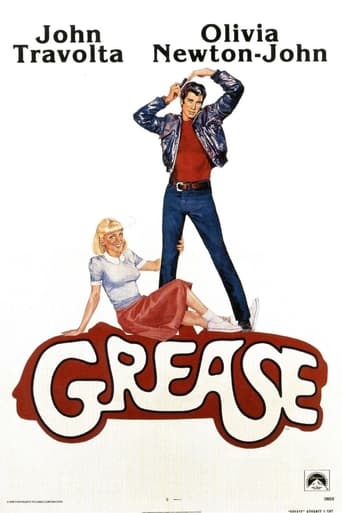
Reviews
It's no definitive masterpiece but it's damn close.
The performances transcend the film's tropes, grounding it in characters that feel more complete than this subgenre often produces.
The film makes a home in your brain and the only cure is to see it again.
Exactly the movie you think it is, but not the movie you want it to be.
When is a motion picture all picture and no motion? To have the answer, see this three-hour collection of close-ups and costumes, a musical ponderously directed by Josh Logan starring three actors who can't sing.In England's early medieval period, King Arthur (Richard Harris) and his new bride Guenevere (Vanessa Redgrave) bring together the flower of knighthood to establish a new golden era of "might for right." But Arthur's most powerful ally, Lancelot (Franco Nero) becomes the undoing of the realm when he and Guenevere begin a passionate, painful affair."How did I blunder into this agonizing absurdity?" is the question Arthur poses in his opening scene. It starts with a musical where the music is not so much performed as presented, shot with abrupt jump cuts and suffocating close-ups that zero right up the noses of the three stars.With three hours, and the Excalibur legend to play with, you would think there is a lot of story here. But there isn't. For ninety minutes, about the same screen time it took Rick and Ilsa to make their plans or Charles Foster Kane to leave his wife, you get a pair of mistaken-identity cute meets and a pointless joust which somehow prompts the previously distant Gen and Lance to fall in love. The next 90 minutes are for watching everything fall apart.Logan indulged his actors famously on set, even allowing Harris to flash Redgrave for cheap laughs and letting Redgrave mess with the Alan Jay Lerner lyrics. Despite its reputation, this isn't Lerner and partner Frederick Loewe's best score; yet the movie makes matters worse by overusing the strings and robbing the songs of any pull. The title song should be a thrusting, raucous number; it's Muzak here.In a promotional show made at the time of the film's release, Logan emphasizes the word "texture" a lot. There is a lot of this on display, what with its touted "45 sets and 3,500 costumes." The costumes look okay; the sets decked out like Christmas trees in "GoodFellas." But where's the story?The Arthur legend is a sprawling epic; to fit something digestible into even three hours you have to make choices. Here, Logan and the production team seemed to decide to zero in on the three main characters and ignore everyone else, except for cheap comic relief from Lionel Jeffries as Pellinore, a king who can't remember where his kingdom is; and David Hemmings as sly and slinky Mordred, the bad guy of the piece. Neither manage to do more than annoy.Of the principals, Harris and Redgrave talk-sing while Nero is dubbed. Nero has negative comic presence, rendering his opening number "C'est Moi" inert; Redgrave is cool and unlikable throughout. Only Harris has a pulse, but as his character is all over the map his energy becomes a weight as the story flips around. Nothing is really established about what makes his Camelot special; the only time I noticed the Round Table was when a horse galloped across it. If you want to celebrate the notion of a land dedicated to the principle people matter, why undercut it by ignoring everyone but the king and his two favorite subjects? It's reflective of the sort of star service Logan made his career; the result is even worse than usual for him.
Sadly, all the studios were on the brink of failure and death and dying was in the air when this was made. Julie Andrews was too old and Richard Burton in the midst of his boozing and Lizzing. Kennedy sadly had died and along with him all that was the dream of anything called 'Camelot'. In theory, Camelot is more an idea/dream than anything reality could conjure. Unfortunately this film wavers between taking itself too seriously and trying on some level to procure fantasy. I once read it was really the showcase/product of the costumer who was a nobody with few credits shoved ahead of time into the film by his wealthy boyfriend. The costumes do convey that of an overexcited queen (not the regal/born into type). In the end, the costumes are the true stars of this 'Camelot'. Harris looks 'so over this' while Redgrave evokes someone resting on her previous laurels and family name only there to collect a paycheck. Nero as all Italian men is about Nero (in other words, "How can I look more ravishing than the women in this thing?"). The men behind the scenes were all too long in the tooth and very tired by the time this was coming into fruition. Shame. More could've been made of it. Everyone was gaga over Redgrave at the time (I am old enough to recall) and I really never saw the attraction. She's always lacked true sincerity and believability as a real human being, I think. It's only in her later films when she's aged that there's an inkling of an authentic person. It's not her fault. Nepotism is a difficult thing to overcome.
Just my first impressions after a brief look. Never had the cast album or soundtrack or seen this until now.I think there are two major flaws; compromised casting as many others have pointed out here. I agree with many of those comments. Oh, Lancelot seem to be some Latin lover; they should have really gone for it and gotten Ricardo Montalbán.Primarily the camera work is too much. Almost all if it is some "modern" filmmaking of the [60s] time that would not allow it to be done the way they did in the 'classics of the "old days.' Panning and zooming or tracking all combined and quick-cuts like TV for some throw-away bits do not make for great film-making. There are so many too-tight shots not leaving any 'air' around the actors too often; facial close-ups cutting off some hair and chins. It diminished the actors. Angled shots all the time, sideways or up or down. Spare my eyes, please. Too-clever focus. A sense of place got lost much of the time, and this is supposed to be a storied, magical world we become privy to. Instead, what I saw looked cheapened. Can some student of film confirm, and is there an example of some newer musical that backed away from these techniques?
The flaws of this film stem largely from the play, in the form of an uneven tone and mediocre songs ("If Ever I Would Leave You" was the only one that survived). The visual appearance of the opening sequence, meant to evoke the mystical quality of Camelot, merely looks like a stage setting. While Richard Harris fares well as Arthur, whose character remains honorable and consistent from beginning to end, the other two leads are hampered by both characterization and performance. Guinevere, played by Vanessa Redgrave, is introduced to us as a spoiled and silly woman ("The Simple Joys of Maidenhood"). She adds to that a distinct lack of regal behavior (her romps in "It's May") and finally brings down the Round Table and the dream. It is hard not to wish that she had lost her way to Camelot in the first place. Lancelot, played by Franco Nero, is introduced to us in a comic song ("C'est Moi") that presents him as a self-centered and fatuous buffoon. His transition into the tragic, tortured hero that he becomes is unconvincing. Part of the problem with these two characters is in the writing, but not all. Redgrave projects a "hippy" Guinevere that now seems horribly stuck in time. Nero was simply miscast. The film is overlong, at more than 3 hours, and many are unlikely to stick with it.
